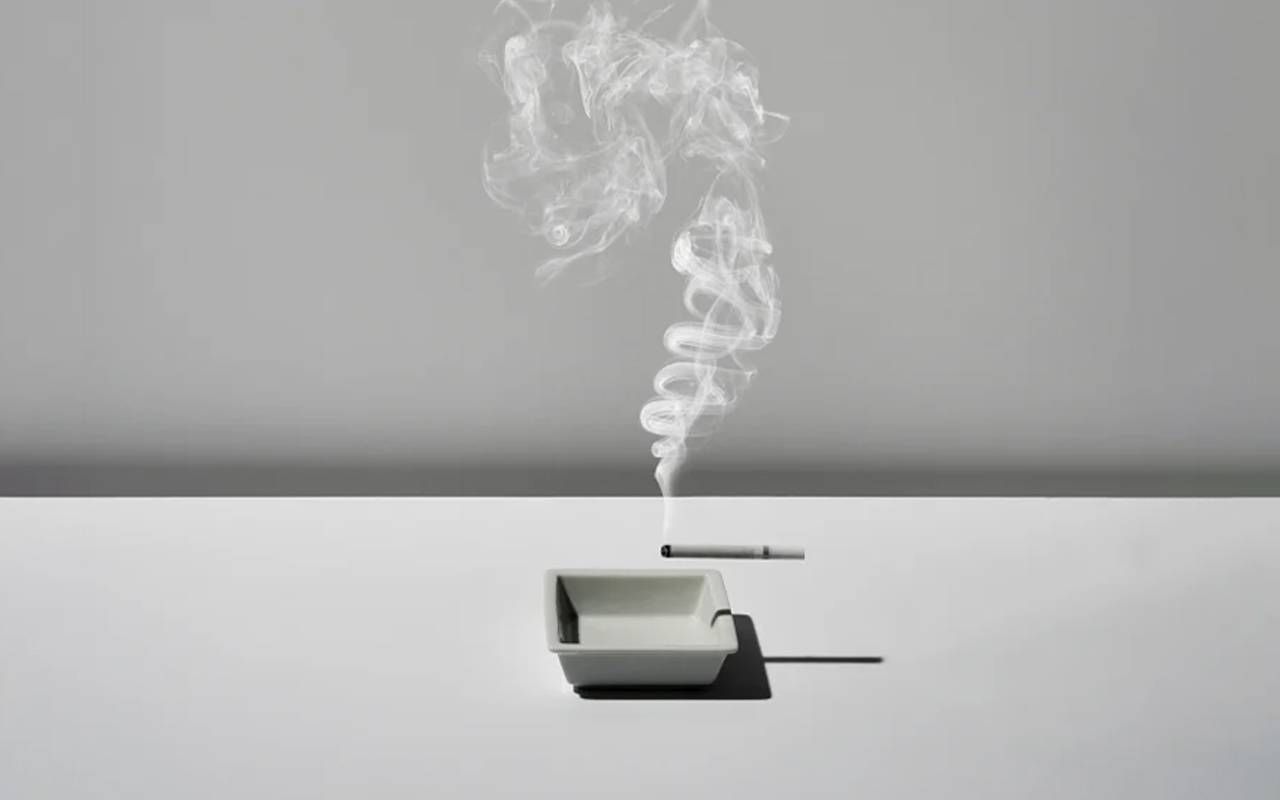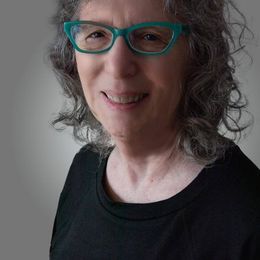A Life Exposed to Secondhand Smoke
A personal account of my late friend, and the significant dangers of secondhand smoke
I wish my longtime friend Joan were still alive to give readers a first-hand account. I share her story, not only in her memory but also at her request.
"I cannot tell you that my cancer is definitely from secondhand smoke (SHS). The oncologist said it's most likely from SHS, but my type of cancer could also be from a mutant runaway defective gene or environmental," she said. "My cancer is not genetic. Not only do I not have that gene, but that I am not passing it on to my family."

Joan, 76 and a nonsmoker, lived a good portion of her life with her husband, who smoked up to 4 packs of cigarettes per day and died in 2002 of small cell lung cancer caused directly by smoking. Fueled by her diagnosis of aggressive urothelial cancer, Joan wanted her story told.
"My purpose is this: I want people to know because I don't think you hear enough about the dangers of SHS," she said.
Kelly Nichols, senior manager of policy and advocacy of the Respiratory Health Association (RHA) in Chicago, explains that the smoke from burning tobacco products is a mix of gas and fine particles.
The Risks of Secondhand Smoke
SHS integrates the smoke from combustible tobacco products and smoke exhaled by a smoker. SHS exposure occurs when you inhale the smoke exhaled by a smoker. "Whether you are in it (SHS) five minutes, 10 feet away, or somebody next to you at a bus stop, any exposure is bad because of the chemicals that exist in those particles," Nichols explained.
Fueled by her diagnosis of aggressive urothelial cancer, Joan wanted her story told.
The U. S. Surgeon General has determined that there is no safe exposure to SHS. Moreover, the Centers for Disease Control (CDC) has found that commercial tobacco smoke contains hundreds of toxic chemicals and "about 70 that can cause cancer." Nonsmokers inhale "many of the same cancer-causing substances and poisons" that smokers inhale.
SHS is classified as a "known human carcinogen" by many agencies, including the U. S. Surgeon General, Environmental Protection Agency (EPA), and International Agency for Research on Cancer. The CDC reports exposure to secondhand smoke causes an estimated 41,000 deaths yearly among adults in the United States, including 7,300 lung cancer deaths and 33,951 deaths from heart disease.
Non-smoking adults exposed to SHS increase their risk of developing coronary heart disease by 25-30% and stroke by 20-30%. With exposure to SHS, blood vessel changes and platelets can become stickier, causing an increased risk of heart attack.
Sharon R. Rosenberg, M. D. Associate Professor of Medicine, Co-director, Asthma and Chronic Obstructive Pulmonary Disease (COPD) Program, Northwestern University Feinberg School of Medicine in Chicago explains further harmful effects of SHS, such as an increase in respiratory infections, "suspected" triggering of asthma attacks in adults, and adverse outcomes in women with pregnancy, including low birth weight.
"There is some data that SHS can make platelets and other things in blood vessels stickier, but we don't know exactly what secondhand smoke does, other than the risks and how it attributes to other cancers specifically," said Rosenberg. "The harmful substances in secondhand smoke can affect cells in the body, but more research is needed on how that translates to specific cancers."
Rosenberg's medical practice is for all pulmonary ailments. She notes a link between cigarette smoking and COPD, but one can also get COPD without smoking. CDC states that "long-term exposure to other lung irritants, like secondhand smoke," can also contribute to COPD. "There is no guideline as to how much secondhand smoke is a risk," said Rosenberg.
Biking to Raise Awareness About Smoking
"At the time my husband smoked, people were not aware of how dangerous SHS was. If my husband knew this was happening to me, he would be heartbroken. He was the nicest man. He had no idea he was putting me in danger," Joan explained.
Non-smoking adults exposed to SHS increase their risk of developing coronary heart disease by 25-30% and stroke by 20-30%.
After her husband's death, Joan took her husband's bike out of the garage and rode it around the neighborhood, keeping him alive by pretending he was riding beside her. Later, she started riding in the RHA-sponsored cowaLUNGa charity bike tour.
RHA has had riders from 25 states participating over the past ten years. Joan rode for a total of 15 years, primarily riding the whole three days and covering 190 miles. Her last ride was back in 2021, lasting two days and covering roughly 130 miles. She was 74 and the second oldest person riding that year. She said, "I support all the causes (of RHA), but the cessation of smoking was my number one."
Laws Banning Smoking
Rosenberg explains that the U. S. Surgeon General first identified involuntary exposure to tobacco smoke in a 1972 report, followed by a causal link in 1986 between inhaling SHS and the risk of lung cancer. The first executive order banning smoking in federal buildings and facilities was in 1997.
"So, we see a lag from kind of our first understanding of the causal link between SHS exposure and lung cancer. Policies come later to reduce that effect," Rosenberg said. As per the National Institute of Health (NIH), the ban protected 2 million people from SHS.
While some federal laws limit exposure to SHS, smoke-free laws pass at the state level. Nichols said that the rules and restrictions can be implemented quicker at the local, municipal and state levels since "the speed of the federal government is terribly slow."
Joan lived in Illinois when the Smoke-Free Illinois Act, a comprehensive anti-smoking law, took effect in 2008. CDC defines a comprehensive anti-smoking law as "one that prohibits smoking at all times in all indoor areas of all workplaces, restaurants and bars."
Anti-smoking laws are uneven across the U. S., leaving nonsmokers vulnerable. Smoke-free laws are mainly regional. Despite the law, Joan's household was unprotected on a day-to-day basis. Nichols said," There are currently no policies in place that protect a nonsmoker in a home they co-own with a smoker."
Challenges at Home
Nichols also explained the number of particles in the air can be reduced in the house by opening the window or using an air purifier, "but they cannot eliminate the hazard in inhaling SHS." Rosenberg stated, "We always want to continue to reduce our risk as well as the risk of those we love."
Rosenberg points to setting up non-smoking rules in the home and the car, even if the windows are down "because the carcinogens in the smoke continue to linger."
There are currently no policies in place that protect a nonsmoker in a home they co-own with a smoker.
The CDC estimates 28 million residents living in multi-unit housing each year are exposed to SHS from somewhere else in their building or adjacent apartment. Ventilation systems (HVAC) can distribute SHS throughout a building; SHS travels from one apartment to the other through doorways, electrical lines and plumbing.
"If you rent or live in a condominium, some smoke-free rules may be included in the lease or by the condo board," said Nichols. The Federal Fair Housing Act may protect a person with breathing difficulties from SHS in most private and public housing since breathing difficulties may be considered a disability.
The Department of Housing and Urban Development (HUD) passed a rule, effective February 2017, mandating all public housing to be smoke-free except for mixed-finance properties. HUD describes mixed-finance properties as a "mixed-income approach, including a wide range of family incomes."
Several agencies, including NIH, CDC, and the U. S. Surgeon General, state that only by entirely "eliminating smoking in indoor spaces" will there be total protection for nonsmokers from SHS.
"It's my mission to tell people, warn them, and for them to check their past and to know in the future, don't ever smoke in front of anyone. Well, hopefully don't ever smoke. You are putting your own life in danger. But second of all, don't put anyone else's life in danger," said Joan.
Joan died in June 2023, knowing much of her life was unprotected from secondhand smoke.


